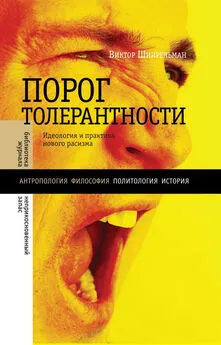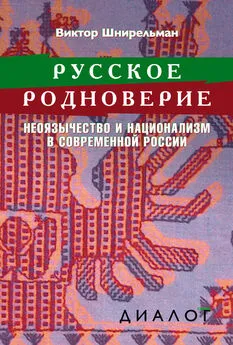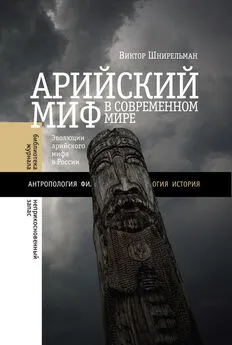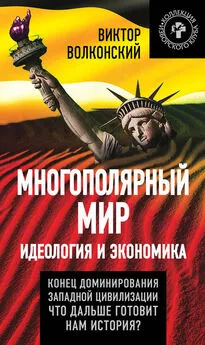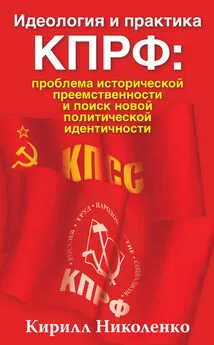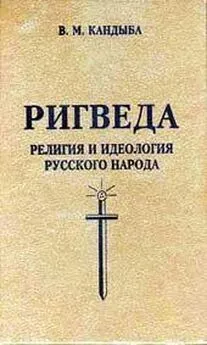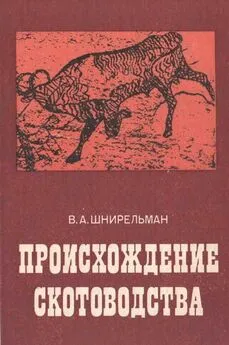Виктор Шнирельман - «Порог толерантности». Идеология и практика нового расизма
- Название:«Порог толерантности». Идеология и практика нового расизма
- Автор:
- Жанр:
- Издательство:Литагент НЛО
- Год:2014
- Город:Москва
- ISBN:978-5-4448-0342-4
- Рейтинг:
- Избранное:Добавить в избранное
-
Отзывы:
-
Ваша оценка:
Виктор Шнирельман - «Порог толерантности». Идеология и практика нового расизма краткое содержание
«Порог толерантности». Идеология и практика нового расизма - читать онлайн бесплатно ознакомительный отрывок
Интервал:
Закладка:
471
То же самое можно встретить в Великобритании или Нидерландах. См.: Essed Ph. Everyday racism: reports from women of two cultures. Claremont, CA: Hunter House Inc., 1990. P. 30.
472
Любопытно, что в этом отношении у белых американцев обнаруживается некоторое сходство с русскими. Как справедливо замечала Г. Старовойтова, если в советское время другие народы могли опираться на свои своеобразные культуры и историю, то у русских, отождествлявших свою историю с государственной, а культуру – с общесоветской, такой возможности не было. См.: Старовойтова Г. В. «Этнический парадокс» и стереотипы мышления // Родина. 1989. № 7. С. 11. Поэтому, по словам осетинского ученого, кавказцы воспринимают русских как людей с «разрушенной культурой», т. е. утративших свою былую культурную специфику. См.: Цуциев А. Русские и кавказцы: по ту сторону дружбы народов // Дружба народов. 2005. № 10. С. 162–163. В свою очередь, казахские социологи подчеркивают, что «никакой особой культуры… у русских, славян в Казахстане почти нет». См.: Биекенов К. У., Абжалиева А. Т. Русские в Казахстане // Катровский А. П. (ред.). Миграции населения в стратегии региональной безопасности и регионального развития. Ч. 2. Смоленск: СГУ, 2000. С. 33. На рубеже 1980–1990-х гг. это весьма беспокоило русских националистов, и они всеми силами, хотя и безуспешно, пытались вернуть русским «культуру», начиная от балалайки и кончая «русской школой». То же самое наблюдается во Франции, где прежде этническая терминология всегда использовалась для «других» и где сегодня правые радикалы стремятся привить ее самим французам, чтобы сопротивляться «культурному засилью» иммигрантов. Об этом см.: Lentin A. Racism and anti-racism in Europe. London: Pluto Press, 2004. P. 30–31.
473
Rosaldo R. Culture and truth: the remaking of social analysis. Boston: Beacon, 1989; Frankenberg R. White women, race matters. P. 6, 192–204; Gallagher Ch. A. White reconstruction in the University // Socialist Review. 1995. Vol. 24. № 1/2. P. 167–168; Nakayama Th. K., Krizek R. L. Whiteness: a strategic rhetoric // Quarterly Journal of Speech. 1995. Vol. 81. P. 298–302; Kincheloe J. L., Steinberg Sh. R. Addressing the crisis of whiteness // Kincheloe J. L., Steinberg Sh. R., Rodriguez N. M., Chennault R. E. (eds.). White reign. Deploying whiteness in America. New York: St. Martin’s Press, 1998. P. 6–7; Rodriguez N. M. Emptying the content of Whiteness // Kincheloe J. L., Steinberg Sh. R., Rodriguez N. M., Chennault R. E. (eds.). White reign. Deploying whiteness in America. New York: St. Martin’s Press, 1998. P. 36; Perry P. White means never having to say you’re ethnic: white youth and the construction of «cultureless» identities // Baker L. D. (ed.). Life in America. Identity and everyday experience. Malden, MA: Blackwell, 2004. Между тем само наличие расовых предубеждений говорит о том, что иррационализм отнюдь не чужд белым американцам. См.: Sears D. O. Symbolic racism // Katz P. A., Taylor D. A. (eds.). Eliminating racism: profiles in controversy. New York: Plenum, 1988. P. 79.
474
Frankenberg R. White women, race matters. P. 231.
475
Rose L. R. White identity and counseling White allies about racism // Bowser B. P., Hunt R. G. (eds.). Impacts of racism on White Americans. Thousand Oaks: SAGE Publications, 1996. P. 39.
476
Gallagher Ch. A. White reconstruction in the University; Rodriguez N. M . Emptying the content of Whiteness. P. 39–40.
477
Giroux H. A. Youth, memory work, and the racial politics of Whiteness // Kincheloe J. L., Steinberg Sh. R., Rodriguez N. M., Chennault R. E. (eds.). White reign. Deploying whiteness in America. New York: St. Martin’s Press, 1998. P. 126.
478
Russell Ch. Racial and ethnic diversity. Ithaca, N.Y.: New Strategist Publications, 2002. P. 910.
479
Charbonneau M. The melting cauldron: ethnicity, diversity, and identity in a contemporary Pagan subculture // The Pomegranate. 2007. Vol. 9. № 1. P. 5–21. См. также: Gardell M. Gods of the blood. The pagan revival and white separatism. Durham: Duke Univ. Press, 2003. P. 138–146.
480
McCarthy J., Hague E. Race, nation, and nature: the cultural politics of «Celtic» identification in the American West // Annals of the Association of American Geographers. 2004. Vol. 94. № 2. P. 387–389, 401–402.
481
Lynch F. R. Invisible victims: white males and the crisis of affirmative action. New York: Greenwood Press, 1989; Бьюкенен П. Дж. Смерть Запада. М.: АСТ, 2003. С. 303. Об этом см.: Winant H. Racial formation and hegemony: global and local developments // Rattansi A., Westwood S. (eds.). Racism, modernity and identity: on the Western front. Cambridge, UK: Polity Press, 1994. P. 283–284; D’Souza D. The end of racism. P. 10, 290–294; Gallagher Ch. A. White reconstruction in the University. P. 169, 175–177; Gresson III A. D. The recovery of race in America. Minneapolis: University of Minnesota Press, 1995. P. 9, 211–212; Fernandez J. P. The impact of racism on Whites in corporate America // Bowser B. P., Hunt R. G. (eds.). Impacts of racism on White Americans. Thousand Oaks: SAGE Publications, 1996. P. 168–169; Kincheloe J. L., Steinberg Sh. R. Addressing the crisis of whiteness. P. 14; Feagin J. R., Hernan V., Batur P. White racism. P. 199–201; Swain C. M. The new White nationalism in America. P. 222–224; Mukherjee R. The racial order of things: cultural imaginaries of the post-soul era. Minneapolis: Univ. of Minnesota Press, 2006. P. 12–15.
482
Kusz K. W. «I want to be the minority»: the politics of youthful white masculinities in sport and popular culture in 1990s America // Baker L. D. (ed.). Life in America. Identity and everyday experience. Malden, MA: Blackwell, 2004. Любопытно, что и некоторые русские футбольные фанаты склонны представлять себя «белым меньшинством». Об этом см.: Лекух Дм. Хард-кор белого меньшинства. М.: Ad Marginem, 2007.
483
Gates D. White male paranoia // Newsweek. 1993. March 29; Kincheloe J. L., Steinberg Sh. R. Addressing the crisis of whiteness. P. 10–11; Rodriguez N. M. Emptying the content of Whiteness. P. 49. Между тем, хотя в 1980-х гг. профессиональная занятость представителей небелых меньшинств несколько повысилась за счет ее понижения у белых мужчин, львиная часть федеральных контрактов (95,7 %) в первой половине 1990-х гг. доставалась белым владельцам фирм, а подавляющая часть случаев дискриминации (96,7 %) приходилась на долю женщин и небелых меньшинств. Кроме того, вопреки жалобам белых мужчин, рост безработицы вследствие деиндустриализации и вывода производства за рубеж ударял по всем категориям населения, а не только по ним. В целом по своему уровню благосостояния белые в 1990-х гг. выгодно отличались от афроамериканцев и испаноязычных. См.: Mukherjee R. The racial order of things: cultural imaginaries of the post-soul era. Minneapolis: Univ. of Minnesota Press, 2006. P. 15–18, 44–45.
484
Ware V., Back L. Out of Whiteness: color, politics and culture. Chicago: The Univ. of Chicago Press, 2002. P. 131–132.
485
Giroux H. A. Youth, memory work, and the racial politics of Whiteness. P. 123–124.
486
Magliocco S. Witching culture: folklore and Neo-paganism in America. Philadelphia: University of Pennsylvania Press, 2004. P. 232.
487
Gallagher A.-M. Weaving a tangled web? Pagan ethnics and issues of history, ‘race’ and ethnicity in Pagan identity // Discus. 2000. Vol. 6 ( http://web.uni-marburg.de/religionswissenschaft/journal/diskus/gallagher.html)
488
Snowden F. M. Blacks in antiquity. Ethiopians in the Greco-Roman experience. Cambridge, Mass.: The Belknap Press of Harvard University Press, 1970.
489
Segal D. A. ‘The Europeans’. Allegories of racial purity // Anthropology today. 1991. Vol. 7. № 5. P. 7–8. Дж. Фредриксон, рассматривая законы 1667–1682 гг., дает несколько иное объяснение. По его словам, до их принятия африканцы, перешедшие в христианство, могли рассчитывать на свободу. Но эти законы сделали основой рабского статуса уже не языческую религию, а африканское происхождение. См.: Fredrickson G. M. White supremacy: a comparative study in American and South African history. New York: Oxford Univ. Press, 1981. P. 78–79.
490
Cornell S., Hartmann D. Ethnicity and race. P. 24.
491
Ibid. P. 102–108; Massey D. S., Denton N. A. American apartheid. Segregation and the making of the underclass. Cambridge, Mass.: Harvard University Press, 1993.
492
Майлз Р., Браун М. Расизм. С. 110–115.
493
MacMaster N. Racism in Europe, 1870–2000. Basingstoke, Hampshire: Palgrave, 2001. P. 64–65.
Читать дальшеИнтервал:
Закладка:
